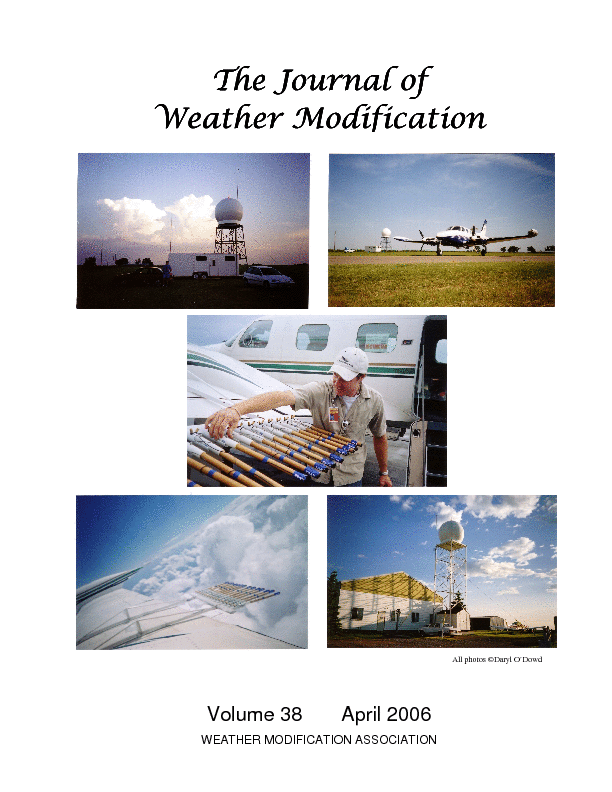Testimony before Joint Hearing by Sen. Subcommittee on Science & Space and Subcommittee on Disaster Prediction & Prevention, November 10, 2005
DOI:
https://doi.org/10.54782/jwm.v38i1.436Abstract
I am honored to appear before you today in regards to Senate Bill S.517, the Weather Modification Research and Technology Transfer Authorization Act of 2005. My name is Dr. Joseph H. Golden, retired from NOAA on September 2, 2005 after 41.5 years of Federal service in NOAA, both in severe weather research and NWS operations. I now work part-time as a Senior Research Scientist in the University of Colorado’s Cooperative Institute for Research in the Environmental Sciences (CIRES) in Boulder,CO. My background in weather modification research relates to the fact that I was the last NOAA manager of the Atmospheric Modification Program (AMP) in NOAA Research, until its termination by the Congress in l995. I was never asked by anyone to defend the AMP Program, based on its merits and accomplishments. The AMP program was written into NOAA’s budget by the Congress for many years, beginning in the late 1970’s. I view the AMP program and its research productivity as a highlight of my NOAA career, especially due to the cooperative efforts among the six States in the program (Illinois, No. Dakota, Texas, Utah, Nevada and Arizona), the universities, private-sector operators, and NOAA research. None of the NOAA AMP funds were used to conduct any operational cloud seeding, and I feel that, at this time, funding under S517 should also not be used for operational cloud seeding efforts. I am pleased to see my colleague, George Bomar here from Texas: he was one of the State program managers in AMP, and his State was the first to utilize NWS NEXRAD Doppler radar data to estimate the rainfall increases from seeding convective clouds. One of my greatest career frustrations has been witnessing the adoption of new research results and technologies we developed under AMP by other countries, while Federal research and technology transfer in my own country has largely stagnated. For example, a chemical tracer technique developed by the Nevada-AMP program to quantify the amount of snow increase due to seeding over mountains is now being used by a new cloud seeding program in Australia. In China alone, their government is funding a greatly-expanded weather modification research and operations program at $100 million per year, as well as training over 1500 new weather modification scientists.Downloads
Issue
Section
Technical Notes and Correspondence
License
Authors that submit papers for publication agree to the Journal’s copyright and publication terms. Authors retain copyright and grant the journal right of first publication with the work simultaneously licensed under a Creative Commons Attribution License that allows others to share the work with an acknowledgement of the manuscript’s authorship and initial publication in Journal of Weather Modification. Authors are able to enter into separate, additional contractual arrangements for the non-exclusive distribution of the journal’s published version of the work (e.g., post it to an institutional repository or publish it in a book), with an acknowledgement of its initial publication in the Journal of Weather Modification. Authors are permitted to post their work online (e.g., in institutional repositories or on their website) prior to and during the submission process to encourage productive exchanges and greater citation of the published article.
Articles are published online using restricted access for the first year. After the first year, articles are made freely available online. Immediate open access for an article may be obtained by the author paying an open access fee which is in addition to the normal page changes. Authors are expected to honor a page charge in order to support publication and distribution of the journal. After the author approves the gallery formatted version for publication, the Weather Modification Association’s Secretary will invoice the corresponding author for the page charges and payment is due within 30 days.
How to Cite
Testimony before Joint Hearing by Sen. Subcommittee on Science & Space and Subcommittee on Disaster Prediction & Prevention, November 10, 2005. (2006). The Journal of Weather Modification, 38(1), 117-120. https://doi.org/10.54782/jwm.v38i1.436




